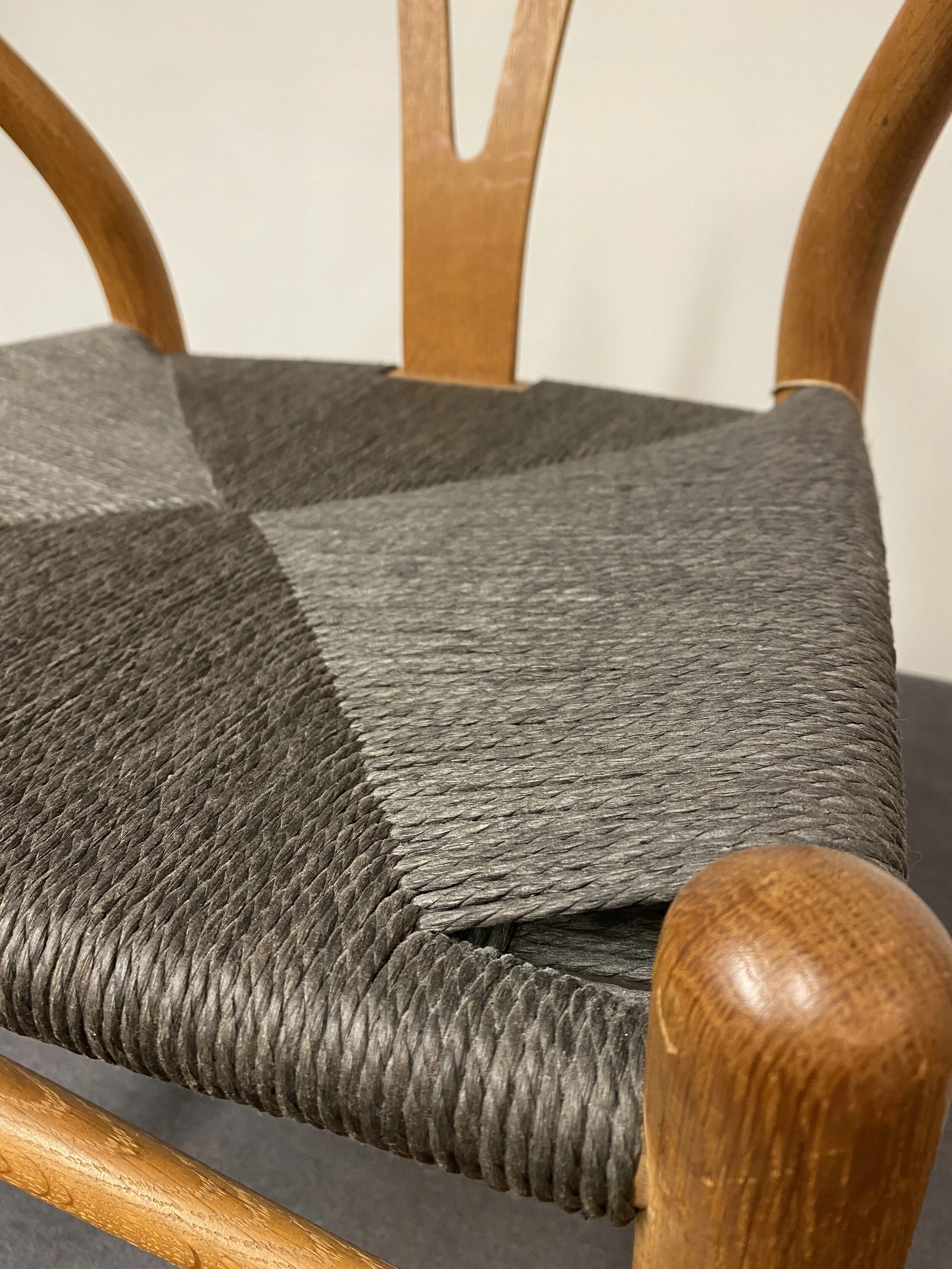Hans J. Wegner’s Wishbone Chair CH24 (1950)
Inspired by Chinese bamboo furniture design of the eighteenth century as well as Michael Thonet’s Café Chair No. 14 from the mid nineteenth century, Danish designer Hans J. Wegner produced a total of five different Chinese chairs during the 1940s. The Wishbone Chair CH24 (1950), also known as the Y Chair, would become the most famous chair of this series and today is recognized the world over. Though the Y Chair was commissioned for mass production by Carl Hansen & Son, Wegner’s design still placed great emphasis on craftmanship. This can be seen not just in the subtle design of the wooden frame, but also in the chair’s woven seat. The seat of the Y Chair is woven with paper cord. The use of paper cord has a rich history in furniture design, but it was Danish designers such as Wegner, Kaare Klint, Niels. O Moller and Borge Mogenson who would popularize its use during the 1940s and 1950s. Seats made of Danish paper cord are incredibly durable and robust. But unlike most seating furniture which can be restored and covered by master upholsterers, seats made of Danish paper cord require the care and expertise of master weavers who specialize in this type of work. While this work can be commissioned in Germany, a few years back the Polsterwerkstatt M made the trip to Denmark to have a few Y Chairs redone by a true Danish weaving master. We commissioned the work to be done in NYT Stoleflet, a workshop located in the Frederiksberg district of Copenhagen, run by Christian Frost who specializes in paper cord weaving. We chose black paper cord which gives a stark color contrast to the lighter tones of the wooden frame.
NYT Stoleflet
Sondre Fasanvej 49
2000 Frederikberg
www.nytstoleflet.dk


